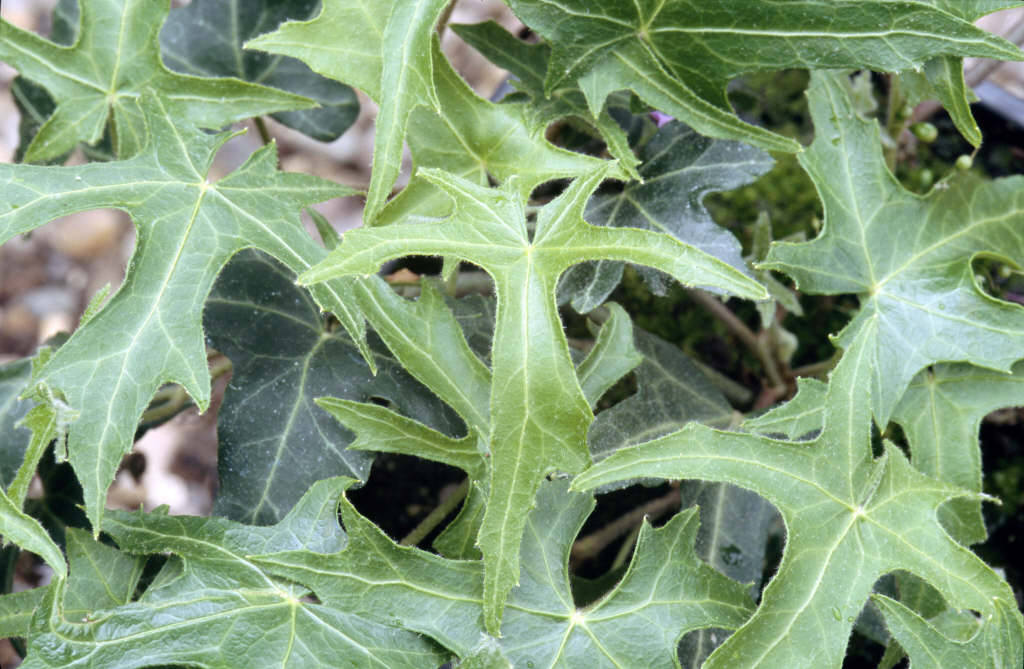Size
Ultimate height
1.5–2.5 metresTime to ultimate height
2–5 yearsUltimate spread
0.5–1 metresGrowing conditions
Moisture
Moist but well–drained, Well–drainedpH
Acid, Alkaline, NeutralColour & scent
| Stem | Flower | Foliage | Fruit | |
| Spring | Green | |||
|---|---|---|---|---|
| Summer | Green | |||
| Autumn | Green | |||
| Winter | Green |
Position
- Full shade
- Full sun
- Partial shade
Aspect
South–facing or North–facing or West–facing or East–facing
Exposure
Sheltered Hardiness
H5Botanical details
- Family
- Araliaceae
- Native to GB / Ireland
- No
- Foliage
- Evergreen
- Habit
- Climbing
- Potentially harmful
- Harmful if eaten: skin irritant/allergen. Wear gloves and other protective equipment when handling. Pets (dogs, cats, rabbits, rodents): Harmful if eaten, skin irritant/allergen. For further information and contact numbers regarding pets, see the HTA guide to potentially harmful plants
- Genus
Hedera are evergreen climbing shrubs clinging by aerial roots. Clusters of small yellow-green flowers are followed by usually black berries. Foliage of flowering shoots is often less deeply lobed than that of the sterile, climbing shoots
- Name status
Accepted
How to grow
Cultivation
Tolerant of a range of soils and conditions but grows best in fertile, humus-rich well-drained alkaline soil in a sheltered spot. See hedera (ivy) cultivation
Propagation
Propagate by softwood cuttings or layering at any time. Root semi-ripe or hardwood cuttings from summer to winter
Suggested planting locations and garden types
- City and courtyard gardens
- Coastal
- Cottage and informal garden
- Patio and container plants
- Wildlife gardens
- Flower borders and beds
Pruning
Pruning group 11, at any time. Renovate in early spring before the growth starts
Pests
May be susceptible to glasshouse red spider mite, scale insects, vine weevil and aphids
Diseases
May be susceptible to honey fungus (rarely) and a leaf spot
Get involved
The Royal Horticultural Society is the UK’s leading gardening charity. We aim to enrich everyone’s life through plants, and make the UK a greener and more beautiful place.
